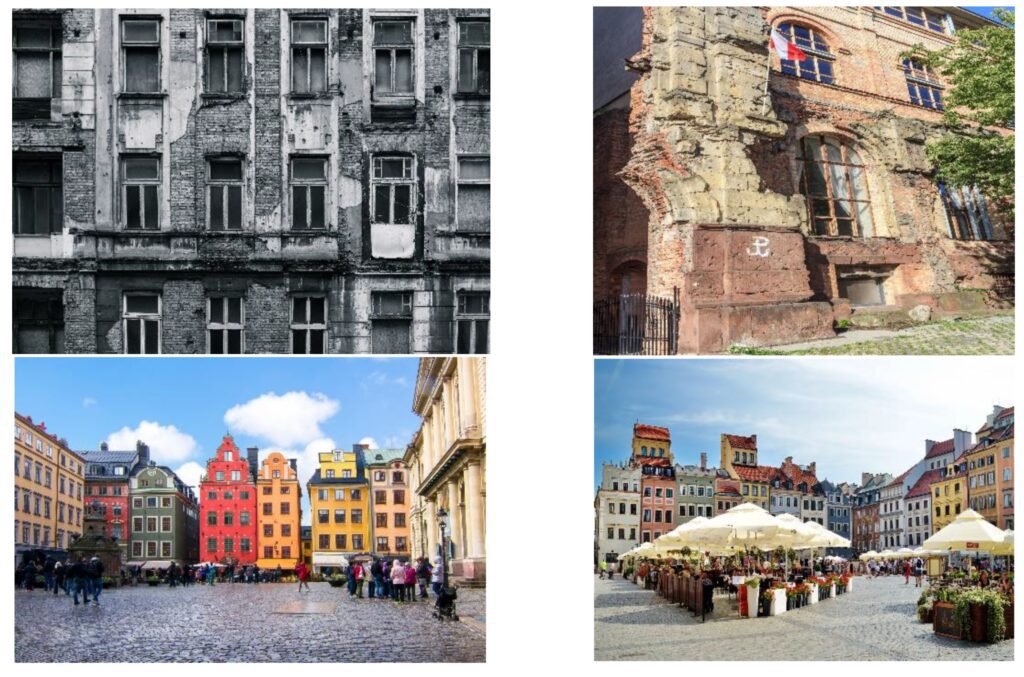This content introduces the concept of visiting reconstructed military fortresses around the world. It highlights the importance of history and how these fortresses offer a unique opportunity to step back in time and experience the stories and tactics of wars long gone. The content then goes on to showcase five impressive reconstructed military fortresses in different countries, including the Alhambra in Granada, Spain; the Tower of London in London, England; Fort St. Angelo in Birgu, Malta; the Fortress of Suomenlinna in Helsinki, Finland; and Fort-de-France in Martinique, France. The conclusion emphasizes the significance of these fortresses as gateways to the past and encourages readers to consider adding them to their travel itineraries.
Reviving the Past: Traveling to Reconstructed Military Fortresses Around the World
Introduction
History is not just something we read in textbooks; it’s alive and present in the ancient architecture that still stands today. Reconstructed military fortresses offer a unique opportunity to step back in time and experience the stories and tactics of wars long gone. These sites provide us with a glimpse into the past, allowing us to witness the bravery and strategic thinking of those who fought to protect their nations. So, let’s embark on a journey to explore some of the most impressive reconstructed military fortresses around the world.
The Alhambra – Granada, Spain
Our first stop is in Granada, Spain, where we find the magnificent Alhambra fortress. Originally constructed during the mid-9th century, the Alhambra underwent several modifications throughout history, reflecting the changing political and cultural landscape of the Iberian Peninsula. Under Moorish rule in the 13th century, it became a military fortress, and later, during the Reconquista, it was renovated into a royal palace by the Christian monarchs. Today, the Alhambra is a UNESCO World Heritage Site, attracting thousands of visitors each year, eager to explore its breathtaking architecture and lush gardens.
The Tower of London – London, England
In the heart of bustling London stands an iconic symbol of power and authority – the Tower of London. Originally built by William the Conqueror in 1066, the Tower played a vital role in safeguarding the city and asserting royal dominance. Throughout history, it served as a royal palace, armory, treasury, and even a prison. Visitors can explore its fortified walls, dungeons, and the dazzling Crown Jewels exhibition. The Tower of London is a must-visit for history enthusiasts looking to dive into England’s rich past.
Fort St. Angelo – Birgu, Malta
Located in the heart of the Mediterranean, Malta has a strategic position that attracted various powers throughout history. Fort St. Angelo, located in the fortified city of Birgu, is a prime example of this. Originally built as a Roman fortification, it later fell under the control of the Knights Hospitallers, who transformed it into a formidable stronghold. Fort St. Angelo played a crucial role during the Great Siege of Malta in 1565, repelling the Ottoman forces and ensuring the survival of the Maltese knights. Today, visitors can explore its bastions, underground chambers, and take in the stunning views of the Grand Harbor from its walls.
Fortress of Suomenlinna – Helsinki, Finland
In Northern Europe, amidst the scenic Finnish archipelago, the Fortress of Suomenlinna guards the entrance to Helsinki’s harbor. Originally built by the Swedes in the 18th century, it later fell under Russian control during the Finnish War. This UNESCO World Heritage Site offers visitors a remarkable blend of military and civilian architecture, showcasing the intricate fortifications and charming neighborhoods within its walls. Exploring Suomenlinna’s network of tunnels, museums, and military installations provides unique insights into the region’s turbulent past.
Fort-de-France – Martinique, France
In the heart of the Caribbean, the fortified city of Fort-de-France stands as a testament to the region’s colonial past. Originally constructed by the French in the 17th century, it served as a defense against rival European powers and pirate raids. Today, visitors can immerse themselves in the vibrant mix of French and Creole culture while exploring the remains of the city’s once-mighty fortifications. The Bibliothèque Schoelcher, a remarkable library commemorating the abolition of slavery, is also worth a visit.
Conclusion
Reconstructed military fortresses are more than just stone and mortar; they are gateways to a bygone era. By visiting these sites, we can gain a deeper appreciation for the struggles, triumphs, and sacrifices made by those who came before us. These fortresses provide a tangible connection to history, allowing us to learn from the past and reflect on the meaning of courage and resilience. So the next time you plan your travels, consider adding a reconstructed military fortress to your itinerary, and be ready to embark on a captivating journey through time.
